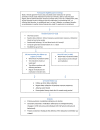The Ready to Reduce Risk (3R) Study for a Group Educational Intervention With Telephone and Text Messaging Support to Improve Medication Adherence for the Primary Prevention of Cardiovascular Disease: Protocol for a Randomized Controlled Trial
- PMID: 30425027
- PMCID: PMC6256101
- DOI: 10.2196/11289
The Ready to Reduce Risk (3R) Study for a Group Educational Intervention With Telephone and Text Messaging Support to Improve Medication Adherence for the Primary Prevention of Cardiovascular Disease: Protocol for a Randomized Controlled Trial
Erratum in
-
Corrigendum and Editorial Warning Regarding Use of the MMAS Scale (The Ready to Reduce Risk (3R) Study for a Group Educational Intervention With Telephone and Text Messaging Support to Improve Medication Adherence for the Primary Prevention of Cardiovascular Disease: Protocol for a Randomized Controlled Trial).JMIR Res Protoc. 2019 Jul 24;8(7):e13831. doi: 10.2196/13831. JMIR Res Protoc. 2019. PMID: 31342905 Free PMC article.
Abstract
Background: Poor adherence to cardiovascular medications is associated with worse clinical outcomes. Evidence for effective education interventions that address medication adherence for the primary prevention of cardiovascular disease is lacking. The Ready to Reduce Risk (3R) study aims to investigate whether a complex intervention, involving group education plus telephone and text messaging follow-up support, can improve medication adherence and reduce cardiovascular risk.
Objective: This protocol paper details the design and rationale for the development of the 3R intervention and the study methods used.
Methods: This is an open and pragmatic randomized controlled trial with 12 months of follow-up. We recruited participants from primary care and randomly assigned them at a 1:1 frequency, stratified by sex and age, to either a control group (usual care from a general practitioner) or an intervention group involving 2 facilitated group education sessions with telephone and text messaging follow-up support, with a theoretical underpinning and using recognized behavioral change techniques. The primary outcome was medication adherence to statins. The primary measure was an objective, novel, urine-based biochemical measure of medication adherence. We also used the 8-item Morisky Medication Adherence Scale to assess medication adherence. Secondary outcomes were changes in total cholesterol, blood pressure, high-density lipoprotein, total cholesterol to high-density lipoprotein ratio, body mass index, waist to hip ratio, waist circumference, smoking behavior, physical activity, fruit and vegetable intake, patient activation level, quality of life, health status, health and medication beliefs, and overall cardiovascular disease risk score. We also considered process outcomes relating to acceptability and feasibility of the 3R intervention.
Results: We recruited 212 participants between May 2015 and March 2017. The 12-month follow-up data collection clinics were completed in April 2018, and data analysis will commence once all study data have been collected and verified.
Conclusions: This study will identify a potentially clinically useful and effective educational intervention for the primary prevention of cardiovascular disease. Medication adherence to statins is being assessed using a novel urine assay as an objective measure, in conjunction with other validated measures.
Trial registration: International Standard Randomized Controlled Trial Number ISRCTN16863160; http://www.isrctn.com/ISRCTN16863160 (Archived by WebCite at http://www.webcitation.org/734PqfdQw).
International registered report identifier (irrid): DERR1-10.2196/11289.
Keywords: cardiovascular diseases; educational intervention; medication adherence; primary prevention; telephone support; text messaging support.
©Jo L Byrne, Helen M Dallosso, Stephen Rogers, Laura J Gray, Ghazala Waheed, Prashanth Patel, Pankaj Gupta, Yvonne Doherty, Melanie Davies, Kamlesh Khunti. Originally published in JMIR Research Protocols (http://www.researchprotocols.org), 12.11.2018.
Conflict of interest statement
Conflicts of Interest: PG and PP were involved in the development of the urine assay test for the detection of statins and antihypertensive medications.
Figures
References
-
- World Health Organization Fact sheet: cardiovascular diseases (CVDs) 2017. May 17, [2018-06-14]. http://www.who.int/en/news-room/fact-sheets/detail/cardiovascular-diseas...
-
- Townsend N, Wickramasinghe K, Bhatnagar P, Smolina K, Nichols M, Leal J, Luengo-Fernandez R, Rayner M. Coronary Heart Disease Statistics: 2012 Edition. London, UK: British Heart Foundation; 2012.
-
- World Health Organization The challenge of cardiovascular disease - quick statistics. 2018. [2018-06-14]. http://www.euro.who.int/en/health-topics/noncommunicable-diseases/cardio... .
-
- National Institute for Health and Care Excellence . Lipid Modification: Cardiovascular Risk Assessment and the Modification of Blood Lipids for the Primary and Secondary Prevention of Cardiovascular Disease. London, UK: NICE; 2014. Jul, - PubMed
-
- Eckel RH, Jakicic JM, Ard JD, de Jesus JM, Houston MN, Hubbard VS, Lee I, Lichtenstein AH, Loria CM, Millen BE, Nonas CA, Sacks FM, Smith SC, Svetkey LP, Wadden TA, Yanovski SZ, Kendall KA, Morgan LC, Trisolini MG, Velasco G, Wnek J, Anderson JL, Halperin JL, Albert NM, Bozkurt B, Brindis RG, Curtis LH, DeMets D, Hochman JS, Kovacs RJ, Ohman EM, Pressler SJ, Sellke FW, Shen W, Smith SC, Tomaselli GF, American COCHATFOPG. 2013 AHA/ACC guideline on lifestyle management to reduce cardiovascular risk: a report of the American College of Cardiology/American Heart Association Task Force on Practice Guidelines. Circulation. 2014 Jun 24;129(25 Suppl 2):S76–99. doi: 10.1161/01.cir.0000437740.48606.d1. https://www.ahajournals.org/doi/abs/10.1161/01.cir.0000437740.48606.d1?u... 01.cir.0000437740.48606.d1 - DOI - DOI - PubMed
LinkOut - more resources
Full Text Sources
Miscellaneous


